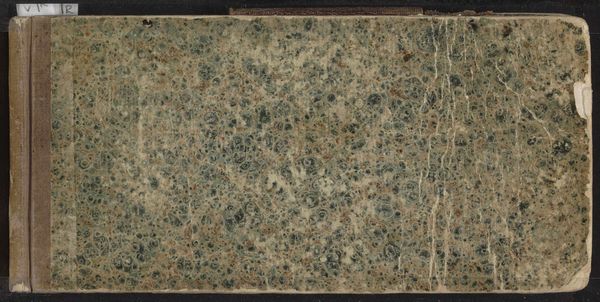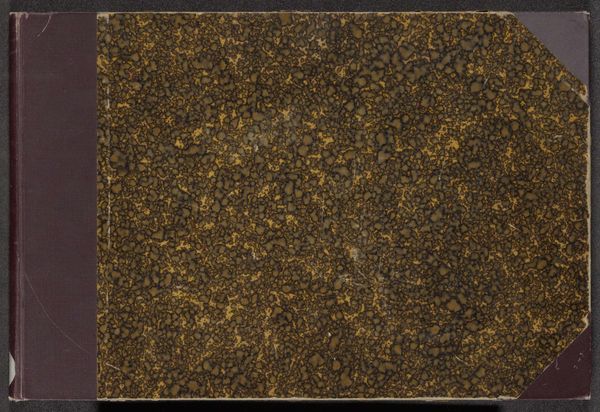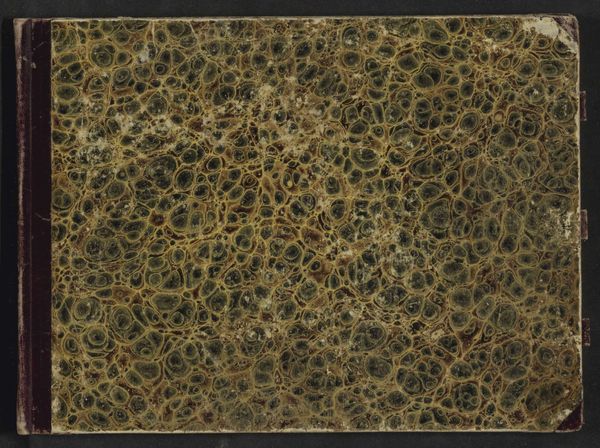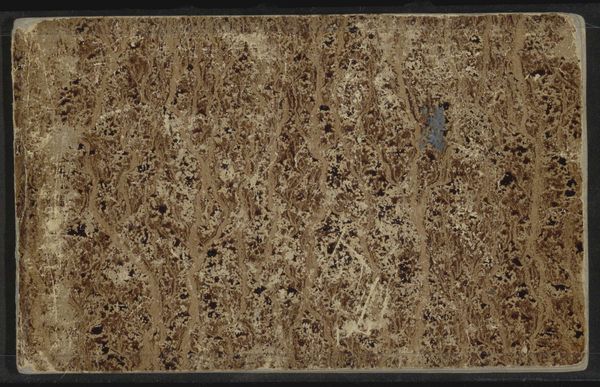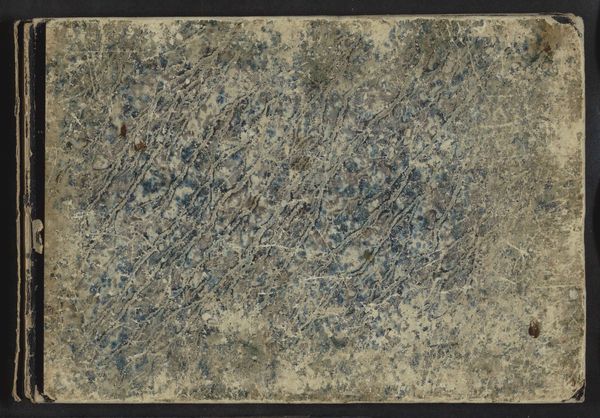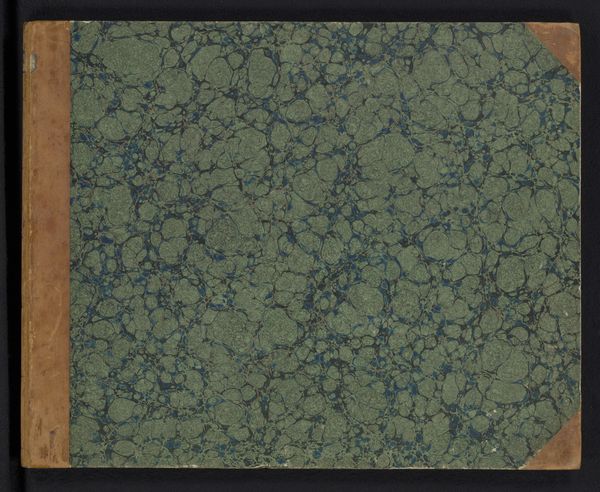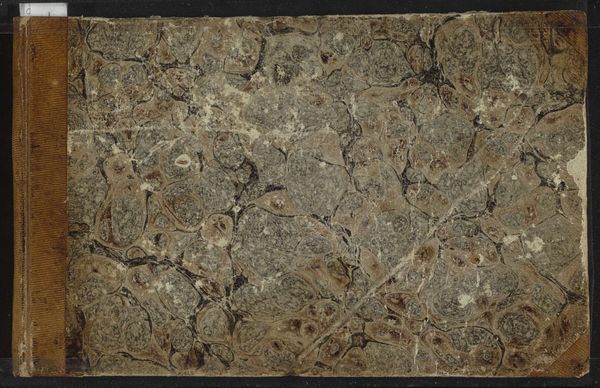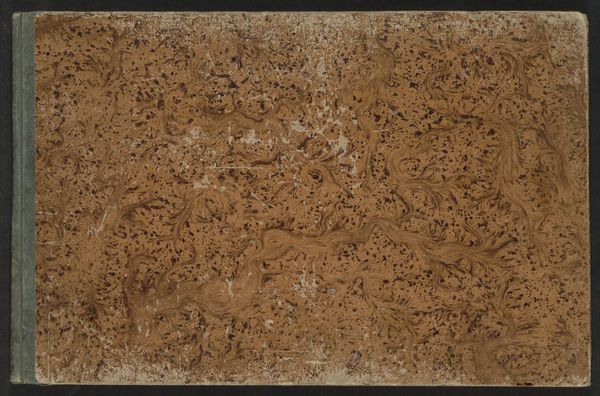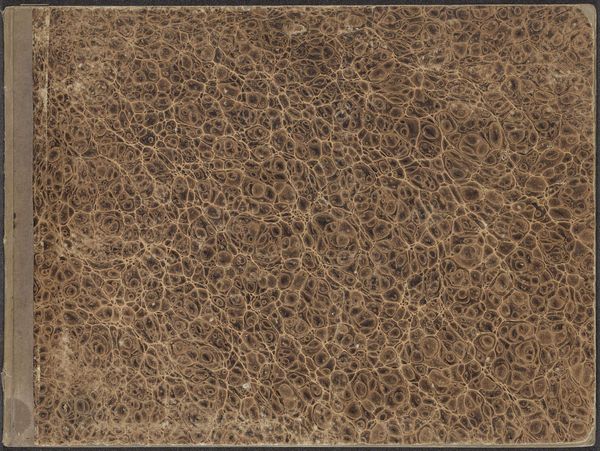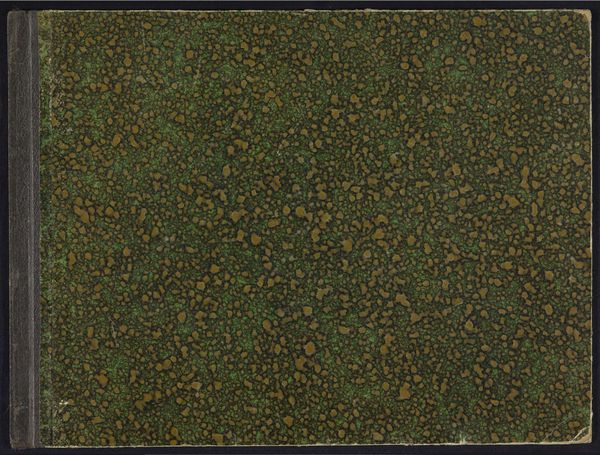
mixed-media, paper
#
mixed-media
#
organic
#
textured
#
paper
#
texture
#
natural texture
#
organic texture
Dimensions: height 210 mm, width 272 mm, thickness 7 mm, width 535 mm
Copyright: Rijks Museum: Open Domain
Curator: Here we have "Schetsboek met 28 pagina's," or "Sketchbook with 28 Pages," a mixed-media piece on paper created sometime between 1825 and 1907 by Willem Springer Jr. The image presents what appears to be the marbled cover of the sketchbook itself. Editor: My first thought is how much it resembles certain microscopic views of organic cells. It’s simultaneously calming and unsettling to gaze upon. Curator: The texture is certainly compelling. Given the historical context, this period saw significant industrial and societal shifts, raising questions of labor, class, and identity. One could see this chaotic pattern reflecting that era's social upheaval and re-evaluation of societal norms, challenging notions of fixed identities. Editor: I see patterns that mimic veins, blood vessels, and organic material. This may reflect a symbolic relationship between artistic creation and the artist’s inner self—each page holding its own precious creation, mirroring the human body's own internal world. Curator: The materiality is crucial to note as well. Paper, often taken for granted, held immense political and social weight. The sketchbook's portability would enable artists to document rapidly changing urban landscapes or comment on societal issues directly. We must consider who had access to these materials and whose stories they documented. Editor: Yes! And the act of marbling itself carries symbolic weight—the swirling, unpredictable mixing of pigments perhaps acting as a metaphor for life’s inherent randomness. The way the dark ink bleeds within the swirls could speak to hidden shadows and secrets, veiled memories awaiting to be unearthed within the book's pages. Curator: Looking at Springer through a contemporary lens, it invites questions about historical memory, archiving, and whose voices have been historically excluded or marginalized. Even the beauty we find in the organic patterns cannot be separated from such power dynamics. Editor: Ultimately, art, in every medium, reminds us of the interconnectedness of history and visual culture. Each element builds upon others, to be reinterpreted by the observer.
Comments
No comments
Be the first to comment and join the conversation on the ultimate creative platform.

